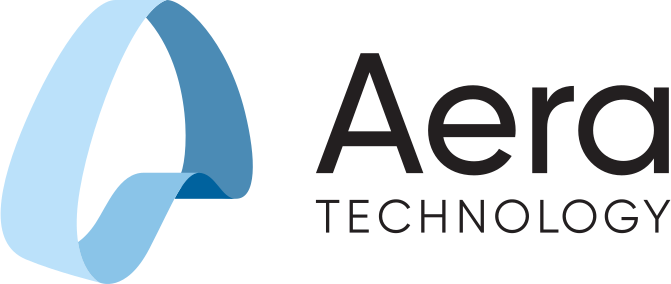Webinar Recap: Why Decision Intelligence Is No Longer Optional

Summary
In our Future.Now webinar, "Why Decision Intelligence Is No Longer Optional," we explored how in a world increasingly defined by complexity, speed, and constant change, business leaders can no longer afford to rely solely on traditional analytics or rigid automation. This was the central message of the session, which unpacked how decision intelligence (DI) platforms are moving from being a competitive advantage to a core necessity, helping organizations navigate uncertainty, adapt quickly, and make better decisions across every layer of the enterprise.
The webinar speakers emphasized how decision intelligence offers a new approach to problem-solving: one that shifts the focus from data accumulation to actionable decisions. Aera, the decision intelligence agent, supports this paradigm shift, enabling continuous, dynamic decision-making that’s scalable, adaptable, and deeply integrated with enterprise operations.
Key Takeaways
- Decision intelligence solves real business pain
The most impactful use cases for DI typically involve supply-demand balancing, excess inventory, and inventory shortages. These are high-frequency, high-impact challenges that every company faces and require rapid, nuanced decisions. - DI complements — not replaces — existing BI and RPA investments
While BI tools provide insights and RPA automates tasks, DI platforms add a crucial layer by connecting insights to decisions and actions, enabling end-to-end, intelligent automation. - Adoption success comes from experimentation and iteration
Successful enterprises start small, tackle specific problems, and rapidly iterate. Aera’s platform is designed for continuous improvement, enabling enhancements and refinements on a two-to-four-week sprint cadence. - DI drives impact beyond supply chain
Though supply chain applications are common due to their complexity and volume of decisions, DI is also being used in financial operations and even higher education to improve student outcomes. - Sustainability is a natural DI use case
Organizations use Aera to optimize decisions around sustainable logistics, such as choosing the most environmentally friendly transportation methods. - A mindset shift is critical
Enterprises must move from being data-centric to decision-centric. This involves identifying critical decision moments, modeling them rigorously, and embracing a new way of thinking about problem-solving.
Speakers
 |
Mike Detampel, VP of Customer Engagement, Aera Technology Mike has 30 years of experience in supply chain strategy, technology, and operations, including leading supply chain product and go-to-market strategy at Anaplan and serving as Global Vice President of Professional Services at Llamasoft. At Aera, he oversees the design and deployment of decision intelligence solutions across the Americas. |
 |
Rob Wolfe, Client Partner, Aera Technology Rob has 20 years of experience in supply chain and operations, including delivering control tower solutions across industries during his time at Deloitte. He brings deep expertise in value realization, roadmap planning, and decision intelligence strategy. At Aera, he advises customers on implementing DI and agentic AI to maximize business impact. |
 |
Suraj Ramalingam, Sr. Solution Engineer, Aera Technology Suraj brings extensive experience in global supply chain management, having held senior roles at Salesforce and Procter & Gamble. At Aera, he focuses on enabling customer success through technology-driven transformation. |
Full Recording
Q&A
Q: Do enterprises engage with Aera for specific initiatives like decarbonization or climate adaptability?
Mike Detampel: Yes, sustainability is a strong use case for decision intelligence. Aera helps organizations make decisions that support their sustainability goals, especially in logistics. One common example is choosing the most environmentally friendly mode of transportation for both internal and external shipments.
Q: What are the most common use cases for decision intelligence — and which ones deliver the greatest impact?
Rob Wolfe: The most common and impactful use case is supply-demand balancing. Companies are constantly dealing with inventory shortages or excesses, and these require fast, complex decisions at scale. It's a challenge every organization faces, and it's why we often demo this scenario — it’s broadly relevant and decision-intensive.
Mike Detampel: I agree. But we're not just a supply chain technology company; we're a decision intelligence company. Supply chain is full of fast, complex decisions that are ideal for DI. For example, continuously monitoring for inventory imbalances and determining whether to transfer, expedite, adjust production, or change purchase orders creates a vast set of decision permutations.
That said, our use cases go well beyond supply chain. We’ve supported financial decision-making, and one of our customers (Western Governors University) is using Aera to map student journeys and intervene at key moments to improve course and degree completion rates. Decisions exist everywhere in the enterprise, not just in supply chain.
Q: If I already have BI and RPA tools, how does a DI platform add value?
Mike Detampel: BI provides insights, and RPA automates routine tasks — especially in back-office workflows. But Aera was designed from the ground up as a comprehensive platform for decision-making. It integrates data harmonization, intelligence capabilities (including agentic AI), UX elements for recommendations and analysis, mobile deployment, and direct action execution. It’s a deeper and broader toolkit. While RPA vendors may eventually move in this direction, Aera is already there.
Q: What separates the most successful DI customers from the rest?
Mike Detampel: Success starts with a willingness to adopt a new mindset. Many enterprises approach these challenges using legacy ERP modifications or best-of-breed tools. DI requires shifting from being data-centric to decision-centric, actively identifying and modeling the decisions that matter. From there, the most successful customers start small, solve a specific problem, and move quickly to gain experience and build internal capabilities.
Suraj Ramalingam: I’d add that continuous iteration is key. The most successful organizations treat each Skill as something to evolve — not something static. They keep improving and adapting the logic, which drives long-term adoption and results.
Mike Detampel: Absolutely. Aera doesn’t deploy rigid, hard-to-change modules. Skills are typically designed and deployed in weeks to months, and the platform is built for continuous refinement. Many customers operate in two- to four-week sprints, constantly enhancing and expanding their DI capabilities. This living environment is a major differentiator — it's not a “one and done” implementation.
Q: How do companies typically get started with decision intelligence? How do they choose where to focus?
Mike Detampel: Most companies begin by addressing a known pain point or aligning with a strategic objective — that’s how they secure funding and internal buy-in. Engagement often starts with Aera’s sales or pre-sales team, or through a partner-led discovery process.
We usually begin with discovery workshops, either virtual or onsite, where we help the customer look at key KPIs and pain points through a decision intelligence lens. We work to surface critical decision moments: Where are important decisions being made today? Where aren’t they being made at all due to time or complexity?
From there, we assess whether those decision areas are good candidates for DI. We explore what triggers the decision (e.g., an alert, a schedule), what risks are involved, and how the options are typically evaluated. This helps us rigorously model the decision-making process — before any technical implementation begins.
Once that model is in place, we can determine whether the decision is best handled through simple rules, optimization, or an agentic AI approach. The outcome of that process gives the customer a clear view of whether a viable Skill can be built and what the potential value would be.






